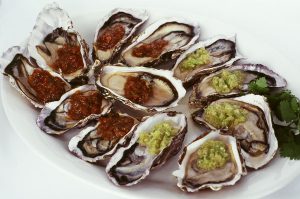Up-to-date estimates of the burden of norovirus, a leading cause of acute gastroenteritis (AGE) in the United States, are needed to assess the potential value of norovirus vaccines in development. We aimed to estimate the rates, annual counts, and healthcare charges of norovirus-associated ambulatory clinic encounters, Emergency Department (ED) visits, hospitalizations, and deaths in the United States.
Methods
We analyzed administrative data on AGE outcomes from July 1, 2001 through June 30, 2015. Data were sourced from IBM® MarketScan® Commercial and Medicare Supplemental Databases (ambulatory clinic and ED visits), the Healthcare Utilization Project National Inpatient Sample (NIS; hospitalizations), and the National Center for Health Statistics multiple-cause-of-mortality (MCM) data (deaths). Outcome data (ambulatory clinic and ED visits, hospitalizations, or deaths) were summarized by month, age group, and setting. Healthcare charges were estimated based on insurance claims. Monthly counts of cause-unspecified gastroenteritis-associated outcomes were modeled as functions of cause-specified outcomes, and model residuals were analyzed to estimate norovirus-associated outcomes. Healthcare charges were estimated by applying average charges per cause-unspecified gastroenteritis encounter to the estimated number of norovirus encounters.
Results
We estimate 900 deaths (95% Confidence Interval [CI]: 650 – 1100), 110,000 hospitalizations (95%CI: 80,000 – 145,000), 470,000 ED visits (95% CI: 348,000 – 610,000), and 2.3 million ambulatory clinic encounters (95% CI: 1.7 – 2.9 million) annually due to norovirus, with an associated $430 – 740 million in healthcare charges.
Conclusions
Norovirus causes a substantial health burden in the United States each year, and an effective vaccine could have important public health impact.
The burden of norovirus in the United States, as estimated based on administrative data: Updates for medically attended illness and mortality, 2001-2015, 14 April 2020
Clinical Infectious Diseases
Rachel M Burke, PhD, MPH, Claire Mattison, MPH, Talia Pindyck, MD, MPH, Rebecca M Dahl, MPH, Jessica Rudd, MPH, Daoling Bi, MS, Aaron T Curns, MPH, Umesh Parashar, MBBS, MPH, Aron J Hall, DVM, MSPH
https://doi.org/10.1093/cid/ciaa438
https://academic.oup.com/cid/article/doi/10.1093/cid/ciaa438/5820114









